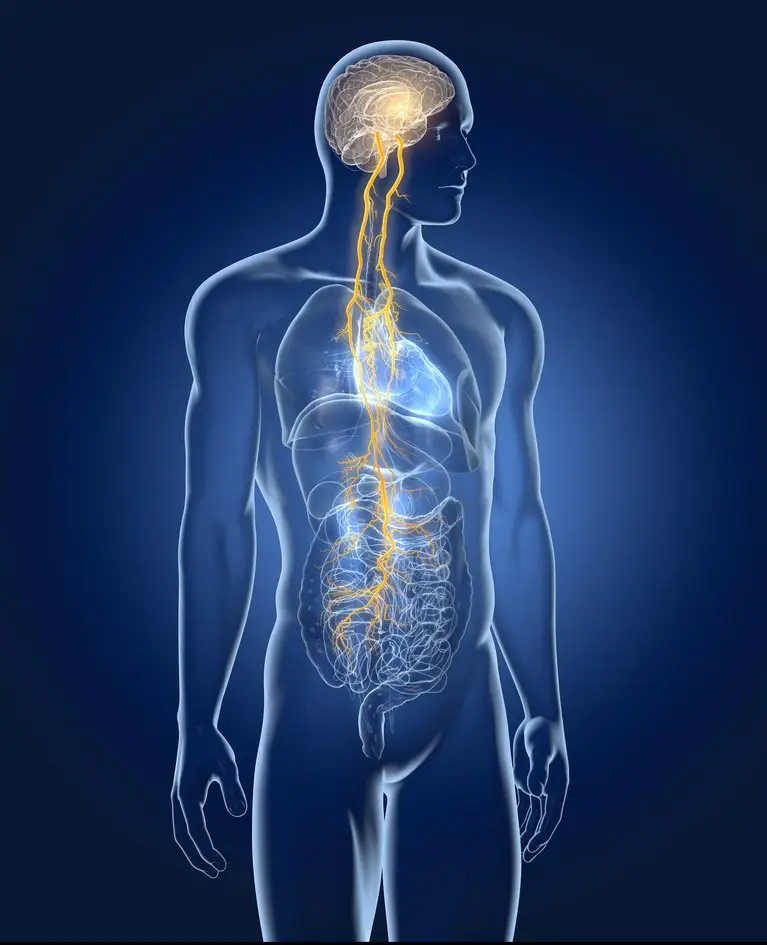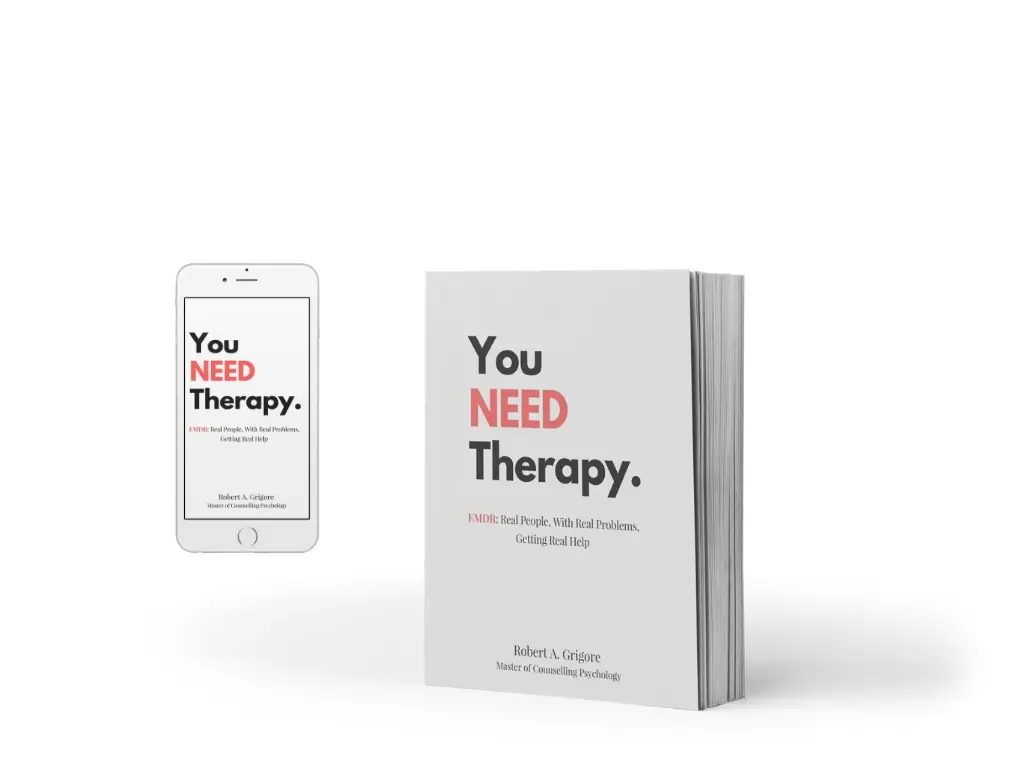What is the Vagus Nerve?
Video retrieved from: The Art of Living, 2023. (Grigore Counselling & Associates share no affiliation, nor receive any financial compensation.)
If you want to skip ahead to the 5 strategies, go ahead and scroll down…you can always come back and inform yourself of what’s going on in your body and why, later. If you’re reading on, the above video gives a great overview of the Vagus Nerve and its function in the body.
Please note: The narrator makes the statement that a “healthy” vagus nerve is required to access leadership, creativity, higher cognition, and complex decision-making; whereas an “unhealthy” vagus nerve means we are only able to access primal instincts like fear, and the “fight or flight response.” While this may be technically true from a medical perspective if somehow the nerve was structurally damaged, I feel the label of “healthy vs unhealthy” to be limited and potentially shame-provoking.
According to Dr. Stephen Porges, the author of “The Polyvagal Theory,” the role of the vagus nerve is evolutionarily more complex.
Dr. Porges explains that all mammals have 3 distinct survival systems:
Hypoarousal/Immobilization: The first response we developed was to Freeze, Dissociate, and then Collapse. In the wild, this looks like an animal playing “dead.” This response would be somewhat effective for some circumstances (say for a picky predator that doesn’t eat dead meat), but not so much if the predator was really hungry.
Immobilization occurs within our Brain Stem and is connected directly to the vagus nerve. This threat response can be thought of as our “reptilian brain.”
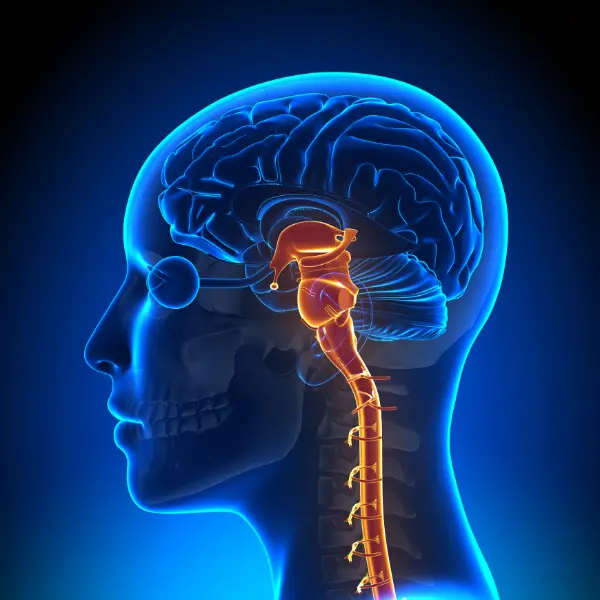
The immobilization response kicks in when the organism perceives it is in grave danger and death is imminent. The nervous system is flooded with all kinds of wonderful neurotransmitters and chemicals that promote pain-relief, and less blood is directed to the brain generating an out-of-body experience. (This is greatly appreciated if being eaten by a saber-toothed tiger.)
Hyper-Arousal/Mobilization: The second threat response we developed as primitive mammals was to Flee or Fight (contrary to popular belief, Flight comes before Fight, as most animals first determine if they can flee a threat before attacking, because a fight has greater potential consequences).
Mobilization responses occur within the Limbic System of our brain.
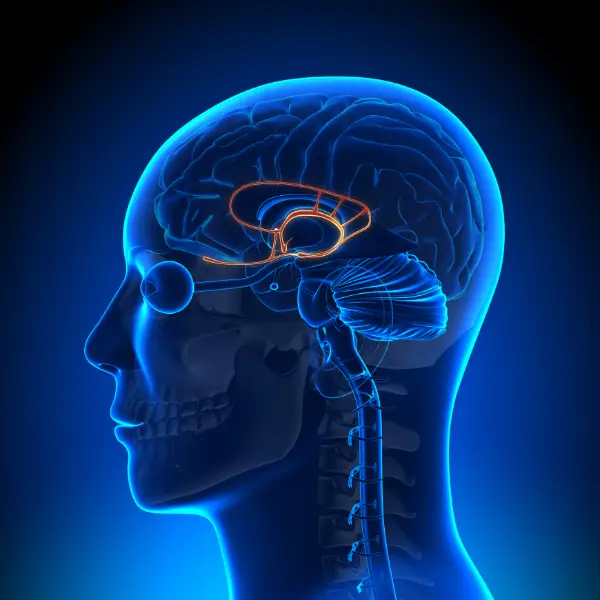
Social Engagement: The third stress response we developed as we became more sophisticated mammals, was to learn how to adapt and form bonds within social groups.
We learned that there was strength in numbers and forming strong attachment bonds was a valuable survival skill.
Here, the mammalian brain expanded to include the prefrontal cortex and other higher order capacities to develop reasoning, empathy, critical and creative thinking, and more.
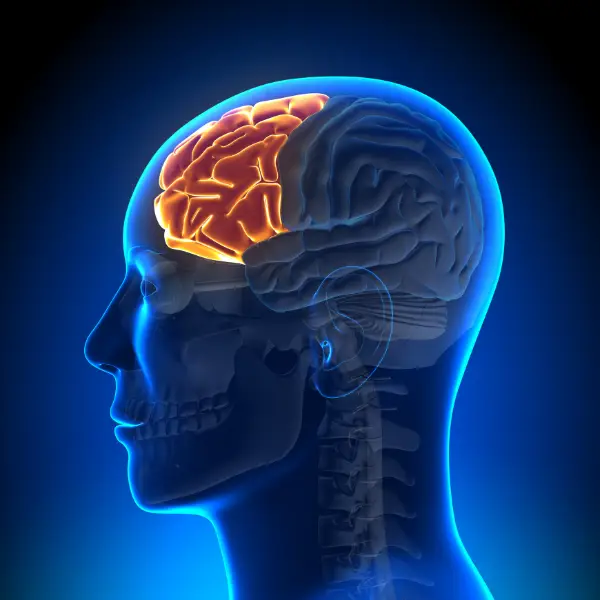
The Window of Tolerance
The Window of Tolerance is a valuable resource to help us understand what is happening with an individual’s stress response. The original version of The Window of Tolerance was first developed by Daniel Siegel in 1999, and published in his book, The Developing Mind.
Although still useful, Siegel’s model was respectfully updated by Dr. Stephen Porges, when he developed The Polyvagal Theory.
We now understand the Window of Tolerance to be as such:
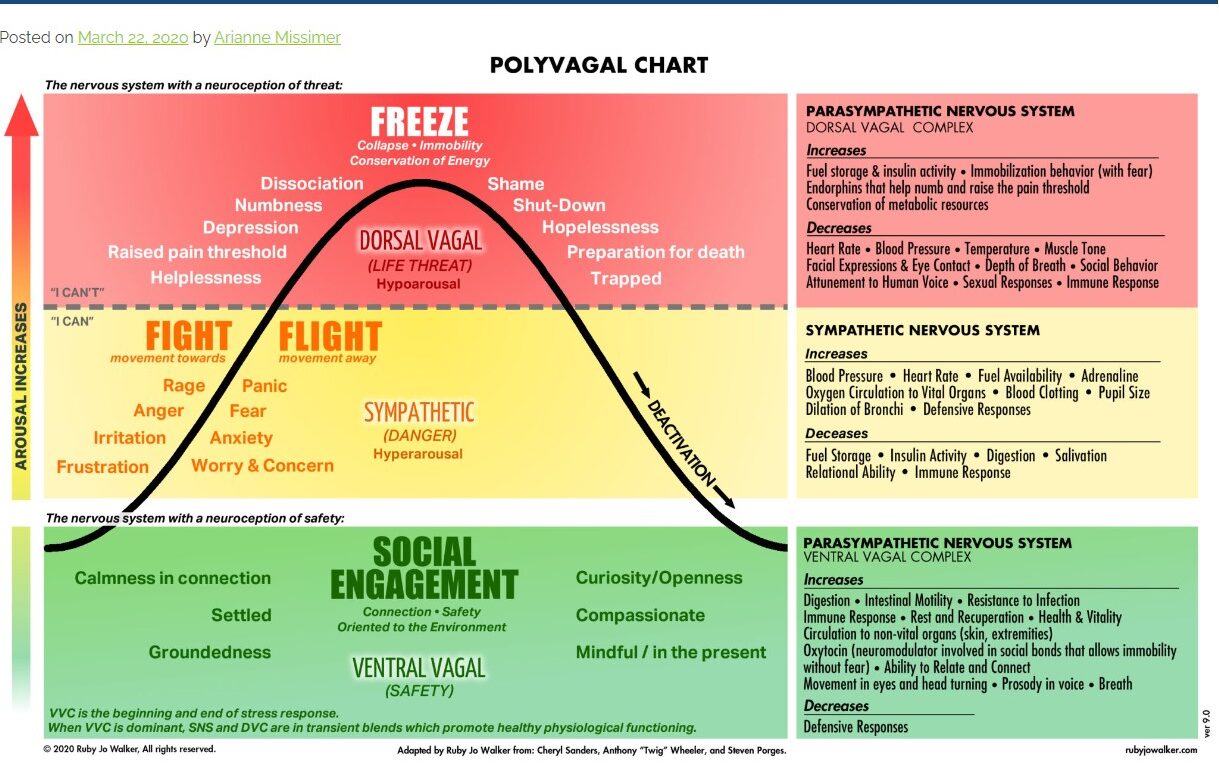
Polyvagal Theory Image retrieved from: https://themovementparadigm.com/how-to-map-your-own-nervous-sytem-the-polyvagal-theory/
Unlock the Power of Your Vagus Nerve: 5 Deep Relaxation Strategies For Anxiety Relief
These practices are intended to illustrate potential methods to aid in stress and anxiety management.
Practicing these tools will increase your body’s resilience to stress, and promote relaxation, but without healing the original source(s) of the anxiety (i.e. trauma and extreme stress experiences), anxiety will likely persist to some degree.
To learn more about how to heal your trauma and eliminate your anxiety and other forms of mental health distress, please visit our website or seek other professional counselling services through www.emdria.org.
DISCLAIMER: If you decide to practice one of these methods and you experience an increase in your stress level, please STOP immediately, and engage in another activity you know as being helpful for you. If you are in an emotional or mental health crisis please contact the crisis line in your area. If you are experiencing a life-threatening crisis, please immediately dial 9-1-1 or the applicable emergency line in your area.
1. Deep Breathing
Deep breathing has long been one of the most effective ways of stimulating the vagus nerve to promote increased feelings of relaxation. Below is a video with 3 of my favourite breathing techniques.
Diaphragmatic Breathing: Using your intention, focus on breathing into the bottom of your lungs and just below the rib cage (diaphragm), rather than breathing shallowly with your upper lungs. Repeat 5-10 times.
Try it with a hand on your solar plexus (diaphragm), and the other hand just above your heart. Breathe into the lower hand first, noticing your bottom hand expanding outward, followed by the upper hand next. (It should look like a balloon expanding from the bottom first than the top.)
Eye Rolls: Using a diaphragmatic breath, look up while keep your head straight during inhalation (don’t overdo the breath, just what feels comfortable). Upon the exhalation, allow your eyes to drop slowly downward to the ground (make sure to exhale all the way out). Repeat 5-10 times.
Tongue Decompressions: Focus on your tongue. Allow your tongue to “drop” to the floor of your mouth (bottom jaw). Mindfully relax your tongue. Allow your jaw to “open” slightly, your throat to expand slightly, and/or your sinuses to open slightly. Breathe with a diaphragmatic breath (don’t overdo it, just what feels comfortable). If you wish you can add eye rolls as well. Repeat 5-10 times (with or without eye rolls).
2. Cold Exposure

Cold exposure is another method of stimulating the vagus nerve. An additional benefit of cold exposure is the tendency of reducing inflammation in the body.
While we don’t recommend jumping straight into an ice plunge challenge (although go ahead if it’s your thing), starting gradually will allow you to build your tolerance.
Even splashing cold water on your face can be helpful to begin.
If desired, you can move to cold showers (TIP: it can be helpful to end a warm shower with a cold blast for around 10-30 seconds). Eventually, you may wish to try entirely cold showers, or even an ice plunge (some [not me!] fill cold bath water with ice and jump in).
NOTE: Depending on one’s personal history, this activity may be triggering and cause the opposite of the desired result. Still, millions around the world love this activity (some go from cold to hot repeatedly). Perhaps one of the most effective ways of engaging in this behaviour is with others (accessing Social Engagement).
3. Singing/Humming/Chanting
Singing, humming, or chanting has been a traditional activity for as long as we have recorded history (probably even before that) — and for good reason.
Singing, humming, or chanting opens the throat and promotes relaxation, and positive emotions. When combined with social engagement (spiritual/religious chanting, concerts, karaoke, etc.), it promotes positive Social Engagement.
And if you’re alone, just think of how you feel when you’re singing along to your favourite song in the shower, car, or wherever you find yourself moved my the music!

In addition to stimulating the vagus nerve, singing, humming, or chanting also activates three bones (malleus, incus, and stapes) within your middle ear which vibrate to increase the sound vibrations and send to the cochlea within your inner ear.
4. Yoga

Yoga has been practiced for thousands of years, and is a very effective method of relaxing the body and the mind, and for stimulating the vagus nerve.
While there are a number of different yoga practices, poses, and disciplines, incorporating “child’s pose,” and “downward-facing dog” into your routine can be very helpful.
Yoga can be easily accessible online or in-person with retreats such as through The Art of Living, as well as a seemingly unlimited other facilitators, just a Google Search away.
Keep in mind that choosing to incorporate others into your routines promotes Social Engagement and helps to downregulate your nervous system.
If you are suffering from symptoms of social anxiety, starting with a virtual yoga class where you can turn your camera off, can be a great way to ease into things. And of course, when you’re feeling ready, enlisting the help of a Certified EMDR Therapist, can help to eliminate the anxiety triggers altogether.
5. Meditation

Like Yoga, the art and practice of meditation has been around for thousands of years — and for good reason. Meditation is a great way of stimulating the vagus nerve and relaxing the body and the mind.
Recommendations for meditation include The Art of Living, and anything by Dr. Joe Dispenza.
As with anything, it’s important to find what works best for you.
Special thanks to:
- Dispenza, J, 2023. Unlimited Dr. Joe Dispenza. Retrieved from: https://www.artofliving.org/ca-en
- Missimer, A, 2023. How to map your own nervous system: The polyvagal theory. Retrieved from: https://themovementparadigm.com/how-to-map-your-own-nervous-system-the-polyvagal-theory/
- The Art of Living, 2023. The art of living. Retrieved from: https://www.artofliving.org/ca-en

